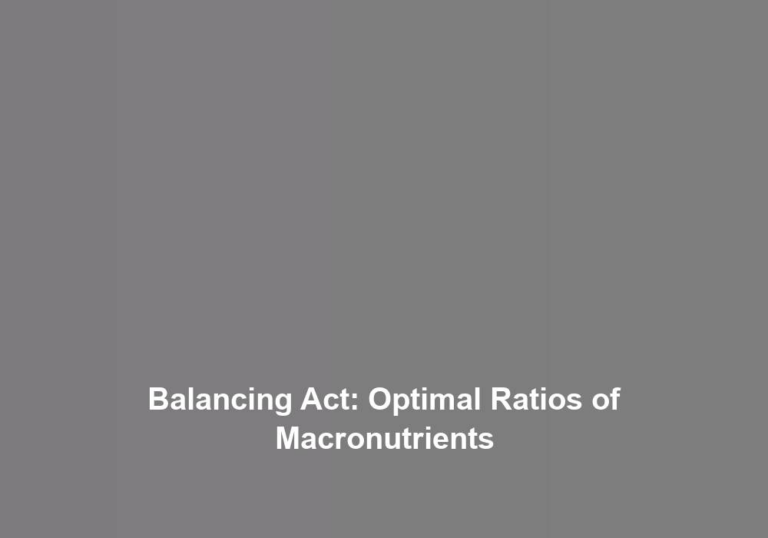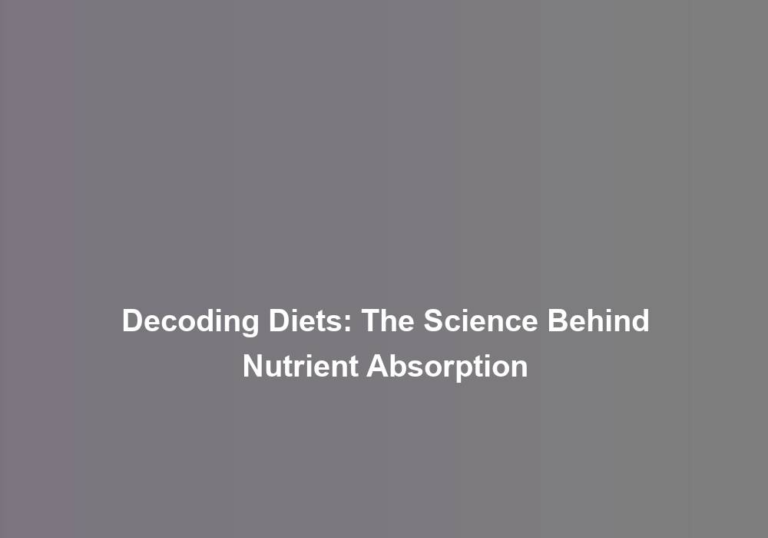Eating Green: Building Blocks of a Healthy Diet
Embarking on a journey to a healthier lifestyle through G??Eating GreenG?? is not just a passing fad, but a fundamental shift in your approach to nourishment. As you navigate the maze of modern dietary advice, you may find yourself wondering where to begin and how to decipher the endless stream of information. But fear not, for the path to a healthier you is paved with the building blocks of a green diet that promise vitality, balance, and longevity. Curious to uncover the secrets to a sustainable and nourishing way of eating?
Leafy Greens: Nutrient Powerhouses
Leafy greens are packed with essential vitamins and minerals, making them a crucial component of a healthy diet. These vegetables, such as spinach, kale, and arugula, are rich in nutrients like vitamin K, vitamin A, calcium, and folate. Incorporating leafy greens into your meals can be both delicious and beneficial to your health. One way to enjoy these nutrient powerhouses is by including them in your salad recipes. Combine spinach with a variety of colorful vegetables, lean protein, and a light vinaigrette for a refreshing and nutritious meal. Experiment with different combinations to find the flavors that you enjoy the most.
Another popular way to consume leafy greens is by blending them into green smoothies. This is a convenient method to pack a variety of nutrients into one delicious drink. Try blending kale or Swiss chard with fruits like bananas and berries for a refreshing and energizing smoothie. You can also add ingredients like Greek yogurt or almond milk for a creamier texture. Green smoothies are a great way to start your day or to have as a snack, providing a quick and easy method to increase your leafy green intake.
Incorporating leafy greens into your diet through salad recipes and green smoothies not only adds flavor and variety to your meals but also provides essential nutrients for your overall health. Whether youG??re looking to increase your vegetable intake or simply enjoy the taste, leafy greens are a versatile and nutritious addition to any diet.
Whole Grains: The Foundation of a Green Diet
Whole grains are the cornerstone of a green diet, providing essential nutrients and fiber to support your overall health and well-being. When it comes to whole grain benefits, they are packed with nutrients such as B vitamins, iron, magnesium, and selenium, which are vital for your bodyG??s functions. Additionally, the fiber content in whole grains supports digestion, helps maintain a healthy weight, and reduces the risk of chronic diseases such as heart disease and type 2 diabetes.
Cooking whole grains can be a delightful and versatile experience. Quinoa, brown rice, barley, and farro are just a few examples of whole grains that can be incorporated into your meals. When cooking them, try using low-sodium broth instead of water to add flavor. You can also mix in some chopped herbs or a squeeze of lemon for a fresh twist. Whole grain substitutes like cauliflower rice, zucchini noodles, or quinoa pasta are excellent options if youG??re looking to reduce your refined grain intake. These substitutes not only add variety to your meals but also contribute to a more balanced diet.
Incorporating whole grains into your meals is easy and delicious. For breakfast, try oatmeal with fresh fruits and nuts. For lunch, consider a quinoa salad with mixed greens and a lean protein. At dinner, you can enjoy a hearty bowl of brown rice and vegetable stir-fry. By experimenting with different whole grains, cooking methods, and meal ideas, you can make them a delightful and essential part of your green diet.
Plant-Based Proteins: A Sustainable Protein Source
After incorporating whole grains into your meals, you can further enhance the nutritional value and sustainability of your diet by exploring plant-based proteins as a valuable and eco-friendly protein source. Plant-based proteins offer a myriad of health benefits while reducing the environmental impact associated with animal agriculture. Here are a few reasons why you should consider incorporating plant-based proteins into your diet:
-
Protein alternatives: Plant-based proteins such as lentils, chickpeas, quinoa, and tofu are excellent alternatives to animal-derived protein sources. They offer a wide range of essential nutrients, including fiber, vitamins, and minerals, which contribute to overall health and well-being.
-
Environmental impact: Unlike animal agriculture, the production of plant-based proteins generally has a lower environmental impact. It requires less water, land, and energy to produce plant-based proteins, making them a more sustainable choice for your diet.
-
Health benefits: Consuming plant-based proteins has been linked to numerous health benefits, including reduced risk of heart disease, lower cholesterol levels, and better weight management. Additionally, plant-based proteins are often lower in saturated fats, making them a heart-healthy choice.
-
Versatility: Plant-based proteins can be easily incorporated into a variety of dishes, from salads and stir-fries to soups and smoothies. Their versatility allows you to experiment with new flavors and textures while meeting your nutritional needs.
Healthy Fats: Nourishing Your Body and Mind
Incorporate a variety of healthy fats into your diet to support the nourishment of both your body and mind. Healthy fats are essential for overall health, playing a crucial role in brain function, heart health, and overall well-being. Two key sources of healthy fats are avocados and olive oil, each offering unique benefits to nourish your body and mind.
| Avocado Benefits | Olive Oil Benefits |
|---|---|
| Rich in monounsaturated fats, avocados support healthy blood flow to the brain, aiding in cognitive function and memory. Additionally, they contain vitamin E, a powerful antioxidant that protects brain cells from damage. | Olive oil is rich in monounsaturated fats, which help reduce the risk of heart disease by lowering levels of bad cholesterol (LDL) while maintaining levels of good cholesterol (HDL). It also contains polyphenols, which are known for their anti-inflammatory and heart-protective effects. |
Incorporating avocados and olive oil into your diet can contribute to your overall well-being. Whether added to salads, used as a cooking oil, or enjoyed on their own, these healthy fats offer numerous benefits for your physical and mental health. By making these simple yet impactful dietary adjustments, you can support your body and mind, promoting long-term health and vitality.
Colorful Fruits and Vegetables: NatureG??s Pharmacy
To continue optimizing your diet, focus on incorporating a colorful array of fruits and vegetables, as they serve as natureG??s pharmacy, offering a diverse range of nutrients and health benefits.
-
Phytonutrient Benefits: The vibrant colors found in fruits and vegetables are due to phytonutrients, which are natural compounds that have numerous health benefits. These include reducing inflammation, supporting the immune system, and promoting overall wellness.
-
Rainbow of Antioxidants: Fruits and vegetables of different colors provide a variety of antioxidants. For example, red fruits such as tomatoes and watermelon contain lycopene, which supports heart health. Orange and yellow fruits like oranges and mangoes are rich in beta-carotene, important for eye health and a robust immune system. Green leafy vegetables, such as spinach and kale, offer lutein and zeaxanthin, essential for eye health. Blue and purple fruits like blueberries and grapes provide anthocyanins, which have been linked to improved cognitive function.
-
Disease Prevention: Consuming a wide range of colorful fruits and vegetables is associated with a reduced risk of chronic diseases, including heart disease, certain cancers, and age-related eye disorders. The combination of vitamins, minerals, and phytonutrients found in these foods work synergistically to promote health and prevent illness.
-
Enhanced Overall Well-being: Including a variety of colorful fruits and vegetables in your diet supports not only physical health but also mental well-being. The nutrients and antioxidants found in these foods have been linked to improved mood, cognitive function, and overall quality of life.
Conclusion
So, next time youG??re filling your plate, remember that eating green is like building a strong foundation for your body. Just like a sturdy house needs strong blocks, your body needs the nutrient powerhouses of leafy greens, the foundation of whole grains, the sustainable protein source of plant-based proteins, and the nourishing healthy fats. And donG??t forget to top it off with the colorful fruits and vegetables that act as natureG??s pharmacy, providing essential vitamins and minerals.







